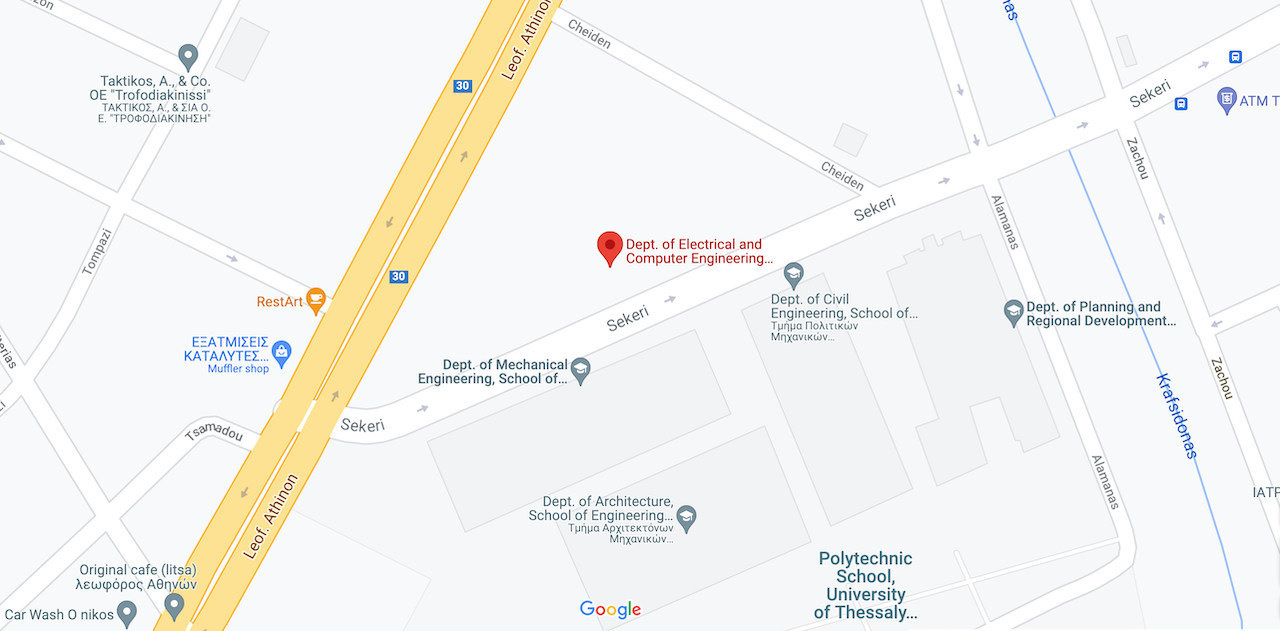| Subject Area | Signals, Communications, and Networking |
|---|---|
| Semester | Semester 9 – Fall |
| Type | Elective |
| Teaching Hours | 4 |
| ECTS | 6 |
| Prerequisites |
|
| Course Site | http://eclass.uth.gr |
| Course Director |
|
- E/M field, diagram, polarization, power, intensity and radiation resistance. The directional gain.
- Wire antennas: input, output power and power gain. Antenna diagrams and their design. Introduction to the moment technique. The input resistance.
- Introduction to basic types of antennas: isotropic, uniform, and elementary sinusoidal antenna. The dipole l/2. Antenna arrays. Reflector antennas. Reference antenna and antenna evaluation.
- Reversibility: diagrams antennas and radios. The Friis equation. Examples of antennas for home use, radio, television, telephony and satellite reception.
- Practical techniques of installation, adjustment and measurement antennas. Operating regulations.
The main objective of this course is to introduce the students to phenomena of electromagnetic radiation and propagation through antennas.
After successfully completing the course the student will be in a position to:
- Analyze and design simple antennas (monopole, dipole, loops), analyze and design antenna elements (Yagi, logarithm, reflectors, spiral),
- Perform E/M radiation measurements and reach to conclusions about the antenna characteristics from the measurements
- Understand issues of E/M compatibility perform the measurements,
- Use simulation programs for analyzing and designing simple antennas
The previous learning outcomes will be evaluated through problems that will be solved by the students (homework), through the simulation and laboratory experiments, but also through the final exams.





